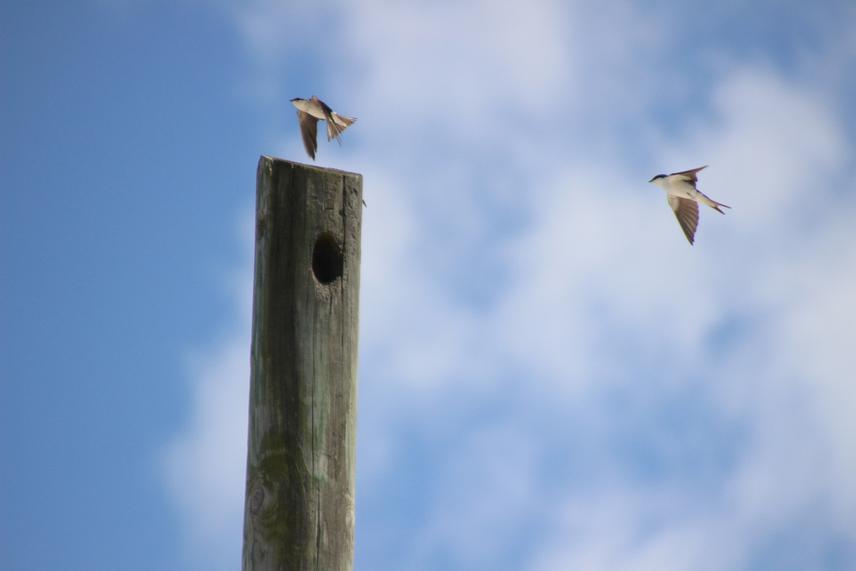Maya Wilson
Other projects
29 Mar 2016
Population Biology, Life History and Ecology of the Bahama Swallow (Tachycineta cyaneoviridis): Informing Conservation of an Endangered Bird in the Bahamas I
8 Mar 2017
Population Biology, Life History and Ecology of the Bahama Swallow (Tachycineta cyaneoviridis): Informing Conservation of an Endangered Bird in the Bahamas II
This project will investigate the ecology and breeding biology of the Bahama Swallow,
aiming to develop conservation strategies for this poorly understood endangered species.

Pair flying over nesting cavity.
The Bahama Swallow (Tachycineta cyaneoviridis) is an endangered passerine species with a crudely estimated remaining population of 1500-4000 individuals. T. cyaneoviridis is an obligate secondary cavity nester that relies heavily on pre-existing cavities in Caribbean Pine (Pinus caribaea), which is present in large tracts on four islands in the northern Bahamas. Bahamian pine forests were heavily logged through the early 1970s, and degradation of this vital breeding habitat through development and natural disasters poses an ongoing threat. Likely extirpated on New Providence, T. cyaneoviridis now breeds on only Grand Bahama, Great Abaco, and Andros Islands. Although rare sightings have been reported in the southern Bahamas, Florida and Cuba, seasonal movements of T. cyaneoviridis are virtually unknown.
This comprehensive study on T. cyaneoviridis will contribute lacking biological data to the scientific community, and provide essential information to develop effective conservation strategies. This work will provide accurate information on current population abundance and distribution, strive to understand T. cyaneoviridis life history strategies by closely monitoring breeding populations, and assess ongoing threats to this species by evaluating the extent of suitable habitat and investigating interactions with competing cavity nesting species and predators. The data I collect during the initial breeding seasons will assist in the design of a nest box scheme, which would be advantageous for T. cyaneoviridis populations and researchers. In addition to providing data specific to T. cyaneoviridis, investigating the interactions with other cavity nesting species and predators will provide a better understanding of the pine forest communities and how to most successfully manage them.
During this research, I will be working in close collaboration with the Bahamas National Trust (BNT) and several other conservation organizations. My work with these organizations will emphasize community outreach, particularly involvement in school programs that educate local children about their surrounding natural environment. I will also work to establish a longterm program to monitor T. cyaneoviridis populations, which would ultimately be coordinated and executed by Bahamian organizations and communities.